When we think about commercial and industrial applications for uncrewed aviation, normally our inclination is for traditional businesses such as delivery, infrastructure inspections, public safety and many others. But what about tourism? There are plenty of countries in the world in which the number one contributor to their Gross Domestic Product (GDP) 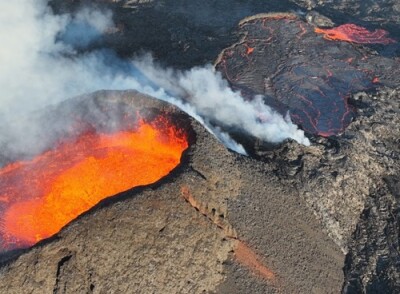 is the revenue generated by millions of foreigners flocking to sunny beaches or exotic places. The Bahamas, Spain, Italy, Aruba and many African countries depend on this influx of international tourism to maintain healthy economies, so how do we take advantage of this potential source of revenue for our nascent industry?
is the revenue generated by millions of foreigners flocking to sunny beaches or exotic places. The Bahamas, Spain, Italy, Aruba and many African countries depend on this influx of international tourism to maintain healthy economies, so how do we take advantage of this potential source of revenue for our nascent industry?
We are all probably aware that traveling with a drone is not easy and flying a drone in a foreign country without a license is a sure way to get into trouble. So, how do we take advantage of the awesome possibilities of watching our surroundings from the air safely and efficiently?
One company has found the answer to this dilemma with a simple and ingenious way of doing drone tourism without the hassle of traveling with a drone or having to get a pilot’s license every country we go. NatureEye, incorporated in Delaware but with team members around the world including London, Boston, Seattle, San Francisco, and Vietnam, has opened the skies of many of the most beautiful tourist attractions to thousands of photography enthusiasts who have seen their dreams of taking pictures from the air, realized, completely remotely.
We had a fascinating conversation with Jonathan Duff, CEO of NatureEye about the genesis of his company and the future of their business model.
“The idea for NatureEye came from our Founder Matthew Rabinowitz's work with the World Wildlife Fund, to find a way for conservancies to generate revenue through virtual tourism,” Jonathan said. “When Covid-19 brought global travel to a halt, our team of experienced entrepreneurs and engineers started building NatureEye. We launched in October 2023 with six locations and have since expanded to nearly a dozen locations around the world.”
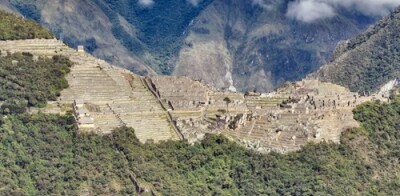 The idea is brilliant in its simplicity. You buy a tour of a place far away and in a few days and after a 10-minute training, you are piloting a drone, with the help of a local certified pilot, and taking pictures of your selected spot.
The idea is brilliant in its simplicity. You buy a tour of a place far away and in a few days and after a 10-minute training, you are piloting a drone, with the help of a local certified pilot, and taking pictures of your selected spot.
“Even though we sell regularly to individual customers worldwide, education is our most successful sector,” Jonathan said enthusiastically. “Imagine an entire classroom of middle-school or high school students assisting their teacher in the operation of the remote controls and at the same time looking at a screen showing nature wonders that are located on the other side of the world.”
The secret to this wonderful way to do tourism is the effective streaming engine that NatureEye developed to allow images and voice communication to travel thousands of miles instantly, creating a unique experience of being there, uninterrupted and with no appreciable lag.
“We offer consumer flights, where individuals can remotely fly a drone in one of our locations and invite a friend to join for $95. These flights also make great gifts, and we have gift certificates available for sale on our website. We also have team-building flights where remotely distributed corporate groups can fly for an hour in two locations starting at $595,” Jonathan said.  “In March, we launched our live virtual field trips for schools, which enable classrooms of students to experience a flight for $150 and can opt-in to purchase additional resources tied to standards. All of the above experiences include access to a guide based in the location who narrates the experience and can assist in flying the drone if needed. Sometimes people are concerned that they might crash the drone, but that's not possible with the collision avoidance systems, geofences, and guide override that we've built into our system.”
“In March, we launched our live virtual field trips for schools, which enable classrooms of students to experience a flight for $150 and can opt-in to purchase additional resources tied to standards. All of the above experiences include access to a guide based in the location who narrates the experience and can assist in flying the drone if needed. Sometimes people are concerned that they might crash the drone, but that's not possible with the collision avoidance systems, geofences, and guide override that we've built into our system.”
The streaming engine is so powerful and so efficient that NatureEye has now launched a service aimed at the public safety sector.
“We've recently launched a B2B company called Centinus where we're leveraging the technology we've developed with NatureEye for Drones For First Responders (DFFR) and security purposes,” Jonathan said. “The response has been very positive as we aim to continue improving our streaming technology and reduce latency as we increase reliability.”
According to Jonathan, Centinus services are designed specifically to offer:
- Ultra low-latency.
- Offering the lowest latency in the market while ensuring real-time control and streaming.
- Offering the lowest latency in the market while ensuring real-time control and streaming.
- Flexible mission control.
- Allowing seamless switch between human-piloted and autonomous flights for optimal efficiency.
- Allowing seamless switch between human-piloted and autonomous flights for optimal efficiency.
- Secure and scalable cloud platform.
- Protecting customer data with advanced encryption and US data residency.
- Protecting customer data with advanced encryption and US data residency.
- Precise object and vehicle detection.
- Allowing for identification and tracking of objects and view their locations on a map with pinpoint accuracy.
- Allowing for identification and tracking of objects and view their locations on a map with pinpoint accuracy.
- AI-powered biometric identification.
- Enhancing safety and security with advanced facial recognition.
- Enhancing safety and security with advanced facial recognition.
- Multi-drone support
- Managing multiple drones from one dashboard.
- Managing multiple drones from one dashboard.
Finally, Jonathan offered us a remote flight to see wild animals in the Antioch Nature Reserve in South Africa. The experience was incredible and while me and my wife controlled the drone under the watchful eye of our local pilot, Marnus, we found a group of hippos in a water hole and a small band of sable antelopes resting under a tree.
It was an unforgettable 25-minute flight, and I will fly with NatureEye again, but this time to see a volcano in Iceland or perhaps fly over Machu Picchu in Peru. The possibilities are endless, the prices affordable, and the overall experience thrilling.


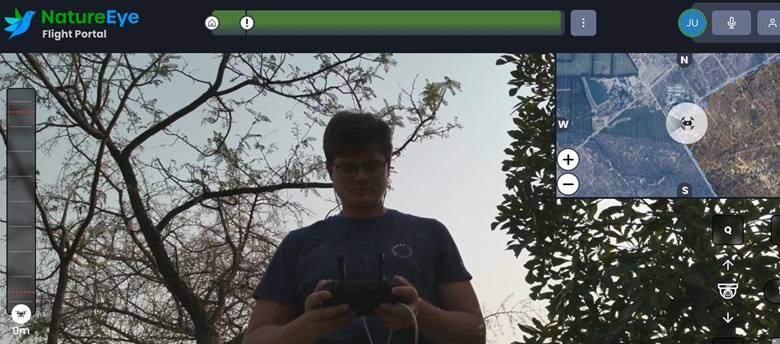

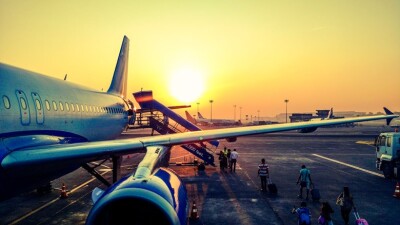
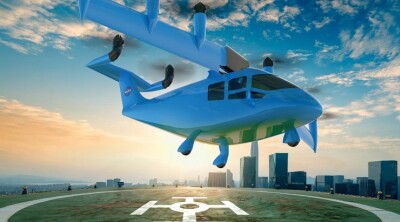









Comments